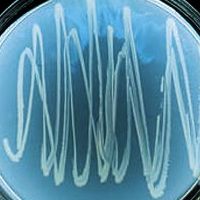My Cart
Your Shopping Cart is currently empty. Use Quick Order or Search to quickly add items to your order!

Evolution can be a difficult and abstract concept to teach. Students may have heard about antibiotics that no longer kill or inhibit the growth of certain bacteria, but they may not understand the evolutionary changes that occur within bacteria to make this possible. It is a great example of how living organisms can change and adapt over time to become resistant or immune to antibiotics.
Antibiotics are naturally occurring substances created by bacteria and many fungi. An antibiotic produced by bacteria kills other surrounding bacteria, thereby eliminating competition for food sources and other limiting factors. The antibiotics harm bacterial cell growth and processes by disrupting cell membrane development, protein synthesis, and cell reproduction. However, due to mutations in their DNA, some bacteria will not be affected by the antibiotics. As the bacteria with mutated DNA reproduce, their DNA is passed on to the next generation, resulting in an antibiotic-resistant population of bacteria. Infections caused by these bacteria are harder to treat because the drugs and chemicals that once killed the bacteria are no longer effective in preventing or curing such infections.
The use of antibiotics has changed substantially over time. Medical professionals are now more cautious and aware, first determining whether an infection is viral or bacterial before recommending a treatment for the illness. Viral infections such as colds, flu, and bronchitis are not treated with antibiotics because these conditions are not caused by bacterial infection. Furthermore, patients are more thoroughly educated. For instance, patients are instructed to take the entire dose of a prescribed antibiotic, thus decreasing the opportunity for bacteria to become resistant.
Inquiries in Science®: Changing Over Time Kit
This kit investigates the evidence of evolution through a variety of guided-inquiry activities. Students learn about phylogenic relationships and explore anatomical similarities between evolutionarily related organisms. They also have the opportunity to design and conduct an experiment based on antibiotic resistance using safe, classroom-friendly E. coli samples and ampicillin antibiotics. For more information about the Inquiries in Science® program, visit www.carolina.com/inquiries.
Antibiotic Sensitivity BioKit®
This easy-to-perform kit allows students to study the effect of 6 different antibiotics on a Gram-positive and a Gram-negative bacterium. Students do not need prior microbiology experience. What’s more, teachers can purchase a demonstration kit to supplement existing class material or buy the classroom kit version so students can participate in the hands-on lab experiment.
Following is a set of questions that you can use to assess and improve your students’ knowledge of evolution and antibacterial resistance, and a list of activities that you can use to build upon their classroom experiences and deepen their understanding of these relevant and engaging topics.